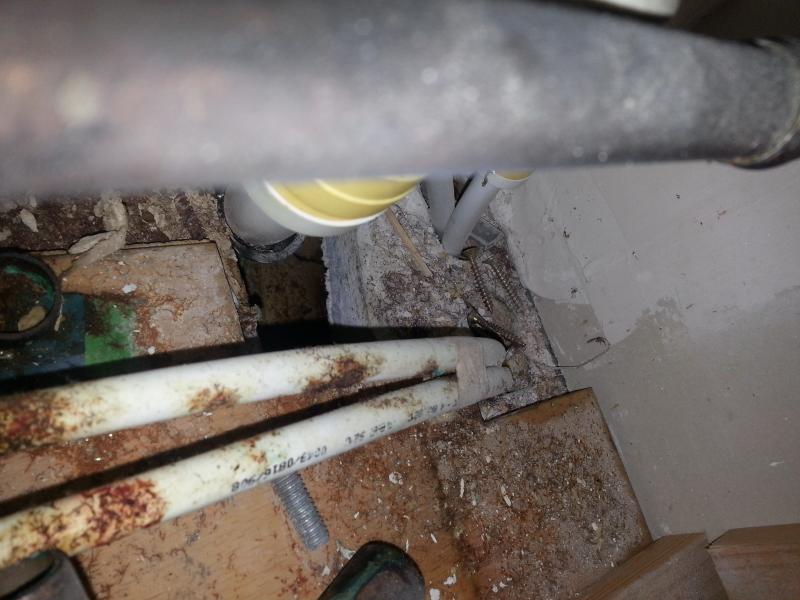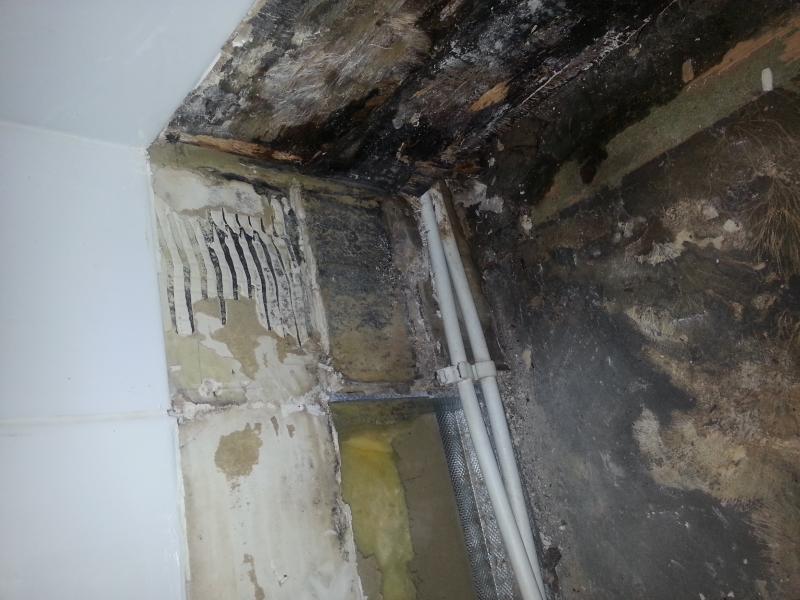Hi
I have ripped out the shower in my flat because we discovered that it had been leaking for a fair while. The chipboard flooring underneath is rotten and needs taking up. The problem is that it runs under a stud wall.
I haven't cut anything back yet but I think that underneath the floor boards there is a layer of what looks like concrete about 1 inch thick. I can't tell at this stage if that runs all across the floor or just in strips. It is hollow/insulated under that. I can see it where ever the floor is cut (pipework, soil stack etc). Texture wise it is very much like a gypsum based product, crumbly and paper backed.
Anyone got any idea what this layer is?
Am I safe to cut the T&G floorboards back to the the edge of the stud wall and replace it with new T&g laid on top of this layer? Is this layer weight bearing?
[/img]
I have ripped out the shower in my flat because we discovered that it had been leaking for a fair while. The chipboard flooring underneath is rotten and needs taking up. The problem is that it runs under a stud wall.
I haven't cut anything back yet but I think that underneath the floor boards there is a layer of what looks like concrete about 1 inch thick. I can't tell at this stage if that runs all across the floor or just in strips. It is hollow/insulated under that. I can see it where ever the floor is cut (pipework, soil stack etc). Texture wise it is very much like a gypsum based product, crumbly and paper backed.
Anyone got any idea what this layer is?
Am I safe to cut the T&G floorboards back to the the edge of the stud wall and replace it with new T&g laid on top of this layer? Is this layer weight bearing?
[/img]




